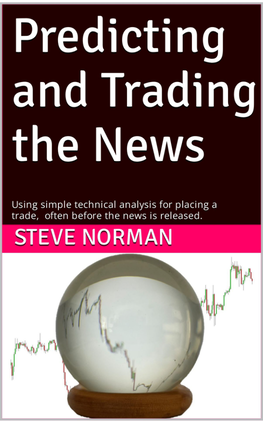|
I was planning to write a post on trading price action but my first search for some research/reference material turned this up: http://en.wikipedia.org/wiki/Price_action_trading
That’s pretty good, I thought, do I need to say more? Not really … but I’ll add this … There seems to be some misconception, amongst many, as to what price action or naked trading is. Obviously it’s the action of price over time, it is not constrained to the reading of a single bar. How many traders look for the perfect buy and sell signal, with singular focus and without regard to where price could go, both up and down, over an ensuing period? Trading price action requires a reading of the current bar (or few bars), in relation to the short-term movement, further in relation to the medium term and further still, in relation to the long term. Trends with supply and demand (or resistance and support) areas provide the road map; bar/candle patterns provide the steering. Ultimately, we are interested in selling at the supply zones and buying at the demand zones. Knowing where those areas are, for which we only have probabilities in the future and certainties in history, is the foundation stone of trading, in my opinion. Where will traders think price is too cheap and where is it too expensive? Where, many times, did traders think price was too expensive? You can have a high degree of certainty that when that view has irreversibly changed, that price level will be the future point where traders will think it’s too cheap; perhaps later again becoming the price where it is too expensive. Price is only what it is because sellers and buyers agree on its value. Price reverses when buyers and sellers agree that it is too expensive; there will be more sellers than buyers, but they all generally agree that price should be cheaper. Retail traders (the small-money guys) fail when they disagree with the consensus of price value. How can that be? I can only think because they are not looking at the bigger picture; they’re too focussed on an array of indicators telling them that price will go somewhere that, conversely, the multi-period price action analysis clearly tells us is unlikely. So don’t start your trading day by looking for signals to buy and sell; rather start by looking at the foot prints left by the big-money traders. Determine where, in the near and distant future, price might be too expensive; where price might be too cheap and where there might be some debate. When price is in those areas, start looking for those signals – whatever your preferred tool-set is for that.
2 Comments
Here's something that I created (initially for myself) some time back, that was found useful by those I shared with in one of my Skype groups recently. As I haven't done a blog for a while (been working on a nice little project) I thought it might be useful to share it here as well.
WAVE 1 …. Starts after a Wave 5 or Wave c of the zigzag has completed WAVE 2 …. Usually formed by sellers who aren’t awake to the fact that an uptrend is in progress (or vice versa) Never pulls back beyond the start of Wave 1 Usually (about 75% of the time) retraces between 38.2 and 61.8% of Wave 1; rarely more than 61.8% WAVE 3 …. Usually the largest of the 5 waves, with greatest volume, steep climb and supported by fundamentals Often reaches 1.618, or longer, extension of Wave 1.Never the shortest of the 5 waves. WAVE 4…. Usually formed by traders taking profits Will be different to Wave 2 – if that was simple (e.g. zigzag abc), Wave 4 will be complex (e.g. sideways correction in a flat triangle) If the current wave can’t be determined, from all the up and down action, it’s probably a Wave 4 Usually takes longer to complete, than a Wave 2 Usually retraces between 38 and 50% of Wave 3 and seldom goes beyond the top of Wave 1 WAVE 5 … Less volume and momentum than Wave 3, giving divergence between price and the eWaves histogram (except in a truncated Wave 5 where the price fails to go higher than the Wave 3) Usually ends between the Fibonacci Expansion level of 61.8% and 100%, calculated from the start of Wave 1, to top of Wave 3, to bottom of Wave 4. Using the same measurement for the 5th Wave of the 5th Wave can give a more accurate target. |
Archives
May 2024
|
|
Website design by Snorm
|


 RSS Feed
RSS Feed